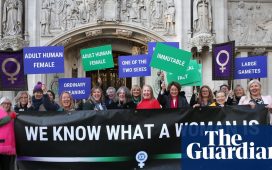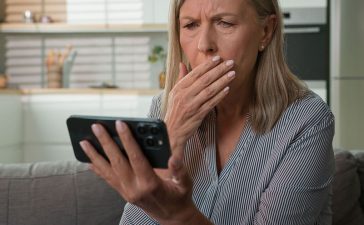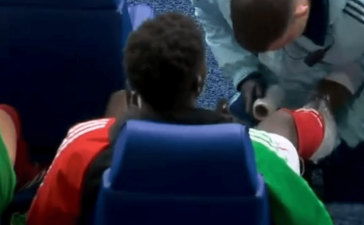Charlotte Raven writes movingly about approaching the end of her life (“Please let me choose. I don’t deserve to suffer a sudden, painful death”, Focus). As a retired palliative care nurse with 22 years’ experience of hospice nursing, I want to express my sorrow that she had such a terrible experience of hospice care and to reassure her (I hope) and others that this is not typical and that hospices can do a huge amount to alleviate symptoms and help people have a good death.
However, I also want to emphasise that hospice and palliative care is not, and never will be, a panacea for everyone who is terminally ill. Dame Cicely Saunders, who created the modern hospice movement, taught us about the concept of “total pain”. She recognised that suffering at the end of life takes various forms – physical, emotional, spiritual and social, often intractably intertwined. In my experience, it was those who suffered “total pain” whose symptoms we were least able to control. Physical pain is often inseparable from other distress, such as the total loss of control over one’s life for which there is sadly no solution.
That is why I believe absolutely in palliative care in hospices, hospitals and at home, but I also believe in assisted dying. Palliative care has improved immeasurably over my working lifetime and I wish all dying people could experience it. And they could if more resources were provided. However, it has its limitations and this is why we need a change in the law to help the small minority of people who would choose at the end of their lives to have a peaceful, assisted death on their own terms.
Gay Lee
London SW2
My cup runneth over
Rachel Cooke talks about the wondrous feeling one can achieve simply by choosing which breakfast coffee cup to use and I wholeheartedly agree (Notebook). Each morning, I remember which relative or friend gave me the mug that will hold my much anticipated first tea. It’s a small pleasure remembering with affection who gave me the mug and, together with the luscious tea, buoys me up for the day ahead.
Valerie Halford
Reigate, Surrey
Surrogacy stereotypes
Sonia Sodha implies that men who want to raise children alone may have malicious intentions (“A child’s best interests, not the desires of adults, should be at the heart of surrogacy”, Comment). Not only do female abusers exist, but so does non-physical abuse. The most common form of abuse children experience from parents is neglect. Who is more likely to perpetrate neglect: the single father who actively pursues parenthood or the reluctant mother of an unwanted child? Furthermore, surrogates are explicitly not the mothers of the children they carry, which is the entire point. Before an embryo exists, all parties agree that the pregnancy is “a process”, although one more akin to organ donation than a commercial “transaction”.
The potential for the process to be abused by organisations looking for profit, or for vulnerable women to be coerced into a pregnancy they either do not want, or do not want to give up, are the issues that deserve careful thought. Surrogacy should remain highly regulated, with stringent welfare checks for the surrogates and a total ban on profit. But arguing that men should be held to a different standard of regulation reinforces the patriarchal stereotype that says only women are fit to raise children, with the devious little corollary that women are only fit to raise children.
Ash Keenan
Boldon Colliery, Tyne and Wear
End child sexual abuse
Discussions last week highlighted the importance of using robust evidence when talking about sexual abuse of children. Sexual abuse is significantly under-identified, whiich limits what we can say with certainty. But there’s plenty that we do know, and using that evidence is key to tackling this horrendous crime. Evidence shows that in the UK victims and people who abuse come from all communities and backgrounds. We estimate that 500,000 children experience sexual abuse in England and Wales every year; the vast majority are not identified by services. Although the most recent annual statistics show an encouraging 15% increase in identification, we’re still only responding to the tip of a depressingly large iceberg.
The barriers that prevent professionals and society from recognising and naming sexual abuse are remarkably consistent, regardless of the nature of the abuse. To address this, all agencies need to commit to, and invest in, building the children’s workforces’ knowledge and skills. Through this, we can support professionals to identify and respond to sexual abuse and prioritise prevention and disruption. The victims and prisoners bill presents a real opportunity for the government to make enhanced commitments to support victims and tackle the shortfall in vital support services. Many will be watching to see that they take it.
Ian Dean, director, Centre of expertise on child sexual abuse
Barkingside, Ilford, Essex
Autistic people need support
I have a formal NHS diagnosis of autism and I read your Comment article with interest (“Autistic people are too often kept out of the workplace. That should end”). To date, I have failed to keep 48 jobs, and, while I fully appreciate that, in an ideal world, this should change, the world is very far from ideal at present. I have been unable to find any support whatsoever from professionals outside the workplace. The likelihood of any such support being available within work is, frankly, nil. Having conducted the work experiment so many times, undertaking jobs in a variety of environments, I can confidently report that the only thing more detrimental to autistic people being kept out of work is being in work without suitable support.
Having my employment repeatedly terminated has most assuredly not helped me to reach any manner of potential, nor to live a rewarding and fulfilling life. “Having more autistic and neurodiverse people in work would make our employment market an even richer and better one,” write Tom Pursglove and Robert Buckland. Briefly, perhaps, but at what cost to the individual? There is a reason that fewer than three in 10 autistic people are in work.
Susan Chipping
Catterick Garrison, North Yorkshire
Suits you, sir
Reading about the return of suits (“A reboot for the linen suit… led by wily Tom from Succession”, News), my husband removed his only remaining one from the wardrobe to find it had been feasted on by moths. Having two weddings to attend this summer, he googled “suits” for inspiration as to a replacement. He was amazed to find a narrower leg now in fashion, but disturbingly these narrow legs just skimmed the ankle and revealed a no-socks look. He is in his 70s. Is this a trend he should follow?
Jo Burden
Marlow, Buckinghamshire











